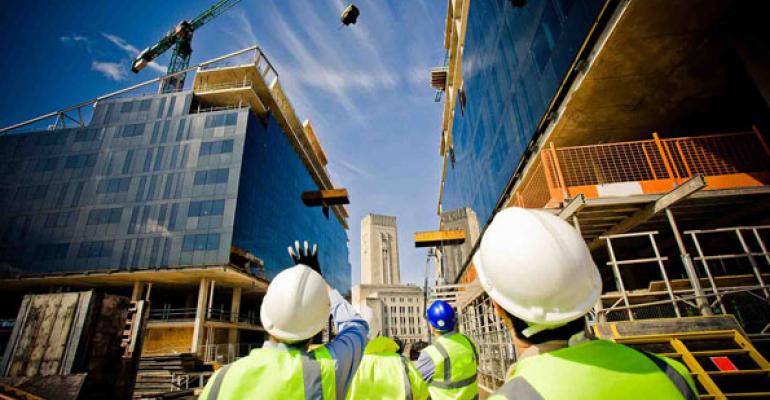Worried about a multifamily construction project? At least the price of lumber and sheet rock is low, along with a long shopping list of other construction materials needed to build apartments. That may help apartment projects avoid cost overruns.
“Prices have actually been getting better,” says Ken Simonson, chief economist for the Associated General Contractors of America.
Construction is booming for the multifamily business, but so far, the cost of construction is not rising out of control. Prices are falling for diesel fuel, lumber and wall board. However, labor is more difficult to find, especially workers that handle lumber and sheet rock.
Material costs are falling
Slow economic growth in most of the world has helped lessen the demand for some important commodities. That’s helping to drive down the prices for many of the materials developers use to build apartments. The producer price index for inputs to construction slipped 0.1 percent in April and decreased 4.0 percent over the 12 months that ended in April.
In particular, fuel prices fell steeply as new supplies of oil flooded the market, especially for diesel fuel, which contractors use in their trucks and other equipment. “The price of diesel fuel has absolutely plunged,” says Simonson. “It’s something that contractors use a lot of.” Diesel prices fell 5.6 percent in April and 42.5 percent over the 12 months that ended in April.
Slow international demand has also pushed down prices for other commodities. Prices for steel mill products are also falling quickly: by 3.4 percent in April and by 8.7 percent over the 12 months that ended in April.
Prices for lumber and plywood are now falling after rising quickly over the last few years. “That’s quite a turnaround,” says Simonson.
Lumber and plywood prices fell 3.7 percent over the 12 months that ended in April, according to AGC. These prices rose 11 percent in 2012 and 10 percent in 2013. But last year, in 2014, prices rose by just 3.3 percent. That’s a little above the overall rate of inflation, but a big difference from the year before.
Prices for gypsum wall board are still rising, but not as quickly. Gypsum prices rose by only 2.3 percent over the 12 months that ended in April, according to AGC. These prices rose 14 percent in 2011 and 2012 and 16 percent in 2013. But last year, prices rose by just 5 percent. That’s a few percentage points more than the overall rate of inflation—but once again, it’s a big difference from the year before.
Prices for concrete and cement are rising more robustly. Prices for concrete rose by 1.4 percent in April and by 5.1 percent over the 12 months that ended in April; meanwhile, prices for cement rose by 2.3 percent in April and by 7.5 percent over the 12 months that ended in April.
Good workers are hard to find
Developers face a serious shortage of labor in many markets—especially for the workers that handle wood-framing and drywall. During the recession, many construction companies closed down, forcing many construction workers to find other work. In the framing and drywall trades, many immigrant laborers left the United States to return to their home countries when their jobs disappeared.
“Labor shortages are beginning to impact pricing and schedules across the country,” says Bob Faith, CEO of Greystar Real Estate Partners.
The shortage of workers may become even more intense if the construction of single-family homes increases to a rate that was normal before the last boom and bust—since projects to build single-family homes and low-rise apartment buildings often compete to hire the same work crews.
“I keep hearing that it’s difficult getting skilled labor in various crafts—it’s difficult even getting bids,” says Simonson.

